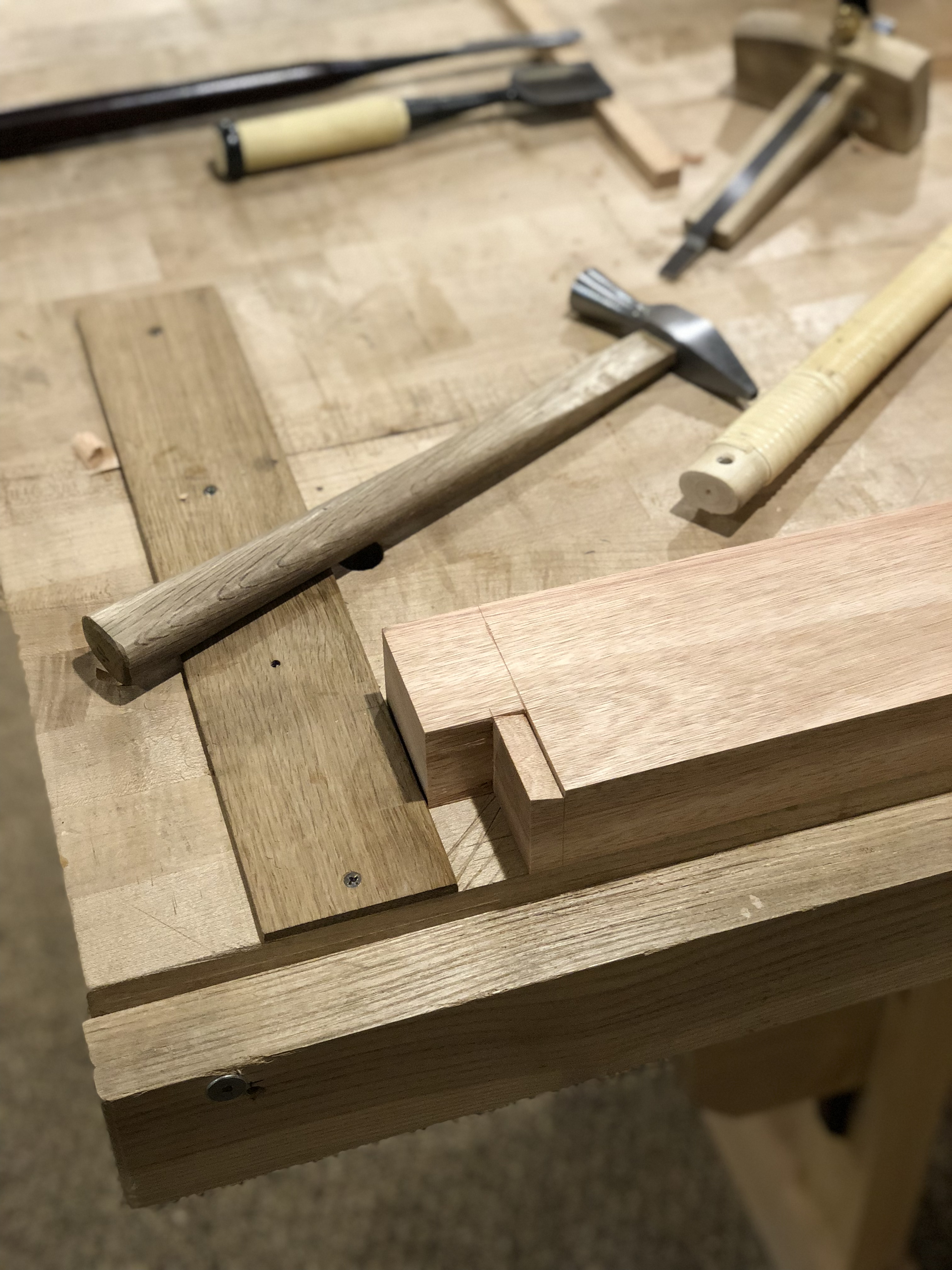I see how Glen Huey dovetails drawer rails into the front of casework with floating stiles going toward the back for case side expansion. I wonder if it is worth the extra effort compared to making standard web frames and using a blind dado in the front. ( Other than aesthetic) I have used the blind dado method on 5 pieces 30 years ago and everything is still strong, no failures so far. I tried the dovetail method once in white oak and had tear out and other issues and ended up having to add a front frame to cover the mess. I'm about to start a chest on chest dresser and have to decide here soon.
Thanks, ron




 Reply With Quote
Reply With Quote






 ?) to cut through at the start and finish of your cut will leave a clean result. Here's a couple different examples cut with backers.
?) to cut through at the start and finish of your cut will leave a clean result. Here's a couple different examples cut with backers.

